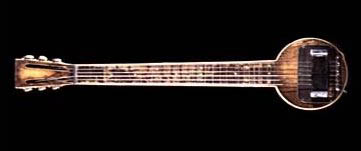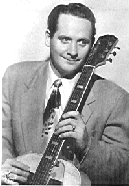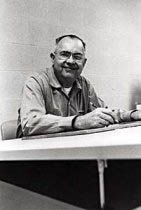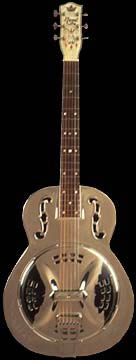The Acoustic guitar, originating from Spain, has been around since the 1500s. It wasn't till the 1920's with the advent of swing and big band music that musicians needed louder instruments. The acoustic guitar, even with steel strings, was simply too quiet.
 |
|
|
At this time, Los Angeles musicians, George Beauchamp and John Dopyera started working on figuring out how to make the acoustic guitar louder. After a few failures, Dopyera came up with the idea to put aluminum disks onto the body of the acoustic guitar. These disks would then resonate and increase the volume about 3 to 5 times. In 1927, the two founded the National String Instrument Co., which patented this resonator design. Due to internal problems, Dopyera fired Beauchamp in 1930 and then eventually even sold the company, patenting the resonator with his brother under a new company named "Dobro".
Beauchamp, a bit unhappy about being fired, set out to figure out a different way to increase the volume of the guitar. Even before, as early as 1925, he had been experimenting with phonograph needles and produced a single string electric guitar that would "pick up" the vibration in the string and turn it into sound. He then started experimenting with ways to pick-up the vibration of all 6 strings, each string seperately. After months of experimentation he and Paul Barth developed a working pick-up made of 2 horse-shoe magnets and 6 coils of wire with electric current running through them.

With this new pick-up, Beauchamp had Harry Watson carve a body for his first electric guitar. They called this the "Frying Pan" due to its similar shape. This was the first guitar fitted with an electric pick-up.
 Frying Pan |
Around the same time, Llyod Loar, acoustical engineer for Gibson, had started marketing a new Spanish style acoustic electric guitar. Loar, famous for the mandolin, headed the subdivision of Gibson responsible for producing these guitars, named Vivi-Tone. This guitar actually failed, but had left the idea that acoustic guitars with electric pickups were the way to go for Gibson.
 Les Paul |
 The Log |
These guitars were not without fault, however. The hollow body vibrations would also be picked up and amplified, causing unwanted noise, feedback, and distortion. Les Paul, a prominent Jazz musician, realized that using a solid body would be the way to avoid this. Using 2 pick-ups, similar to Beauchamps, fastened to a 4" x 4" piece of pine, he was able to make the base for the guitar, which gave it the name "the log". Then he attached two guitar shaped halves to make it look like a guitar. He took this idea to Gibson, but due to previous failures with solid body guitars, and their success with their new acoustic electric guitars, they declined his offer.
 Leo Fender |
 Broadcaster (Esquire) |
At this same time, Leo Fender had been working on a similar solid body electric guitar. Fender owned a radio repair shop and started loaning out his invention to musicians as early as 1943. In 1949, he started marketing the guitar as the "Esquire" which became the first successful solid body electric guitar. This model was then later renamed to "Broadcaster" and then finally to "Telecaster". The Fender Telecaster is a model still produced and sold by Fender.
 1952 Les Paul |
In 1952, knowing of the Fender guitar's success, Gibson reconsidered Les Paul's "log" and even let him use his name for the model. This guitar set the industry standard for electric guitars and became one of the most sought after guitars of today, often selling for tens of thousands of dollars.
